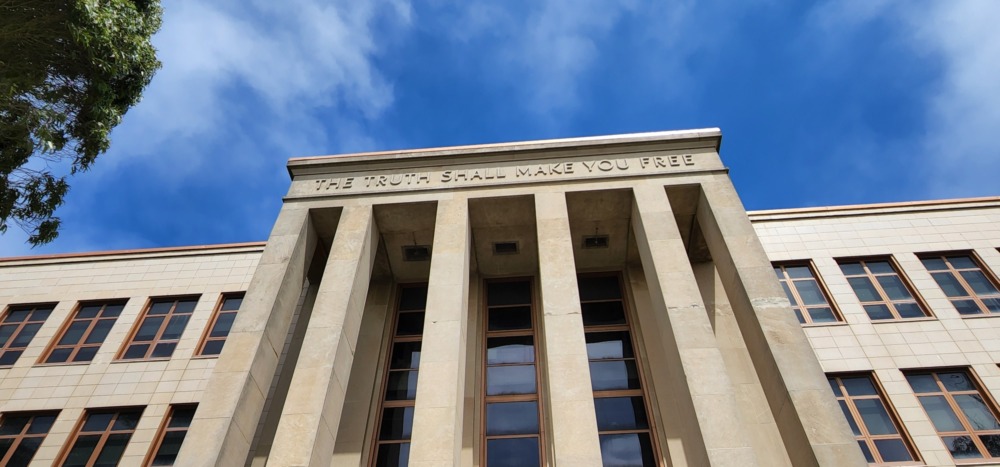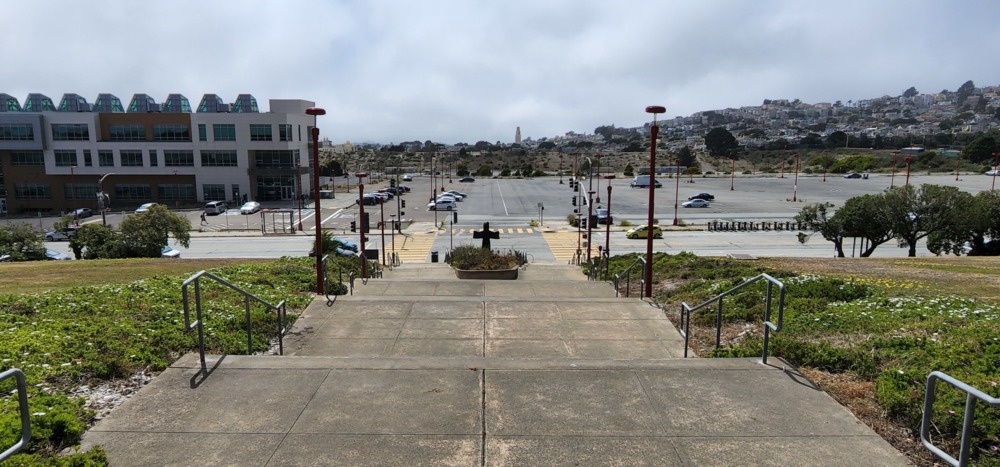Ocean Campus Science Hall Stands the Test of Time
By Emma Pratt
espratt8@mail.ccsf.edu
Chief Deputy Superintendent Archibald Cloud, of the San Francisco Unified School District, secured the Ocean Campus as the main campus for City College in 1936. Austin White writes this fact in “Seventy Years of Making Dreams into Reality,” a short history of City College published in 2005.
Bringing the Science Hall to Life
The Board of Education voted, on February 10, 1936, to approve the Ocean Campus land for use by City College, White said.
In the years between approval and construction, the college community went to great lengths to secure funding for the science hall and ultimately bring it to fruition. White writes that in the spring of 1938, Cloud and the school board brought a two million dollar proposal to the public, asking them to grant the specified bond money for the construction of the science hall. White describes how Cloud mobilized students to rally for the proposal, which included a student protest along Market street, leafleting, telephone calls, and even a campus choir campaign song. Most relevantly, thousands of copies of the special bond edition of The Guardsman were printed and distributed, said White. Needless to say, community efforts paid off, and the science hall was completed in May 1940, as specified in the September 8, 1939 edition of The Guardsman, found on “Internet Archive.”
Originality Prevails
The science hall sits atop the highest peak on campus. Architect Timothy Pflueger purposely designed the science hall to be longer than San Francisco’s City Hall; 400 feet versus 489 feet, wrote author White. Bringing a sense of grandeur to the Ocean Campus, White wrote that the science hall is architecturally different from other amenities on campus that were designed later, mostly in the 1950s, 1960s, and 1970s. Louis Conlan, president of City College during this period, built several buildings on the Ocean Campus based on cost analysis, rather than aesthetic coherence, said White.

One theme that remains consistent throughout the Ocean Campus is the display of various artworks. On the walls of the science hall lies a large-scale mural that was originally showcased in the California Academy of Sciences, said Doug Love, who has been a laboratory manager in the science hall since the 1990s. When speaking of the woodwork in the chemistry lab on the third floor of the science hall, Love said that “this is the same, original from the 1930s. . . it’s quite expensive to do this nowadays. . . they built it with the depression-era workforce.” Much of the original building remains as it always was. Love shared that the planetarium on the top floor no longer keeps a telescope. Down in the basement, the original campus cafeteria is now City College’s mailroom.
The Surprising Past and Moving Forward
Before the Ocean Campus was acquired, the land was used in a variety of surprising ways. In the late 1800s, Spring Valley water company bought the land and later built a reservoir on site, though one that never held water, said Amy O’hair for “The History of the Balboa Reservoir: A Timeline”. The reservoir site was eventually used by City College as a parking lot, and the December 12, 1979 issue of The Guardsman, found on “Internet Archive,” describes the recurrent flooding of this lot, due to poor drainage – an expected occurrence at a site designed to hold water.
Throughout the 1800s the campus land served as both a recreational park and juvenile corrections facility. The Ingleside Coursing Park, located at the now campus parking lot on Ocean Avenue, was home to a sports and betting arena, involving dogs, hares, and horses, as described by Woody LaBounty in 2011. The park was eventually shut down due to neighborhood concerns over the sport, LaBounty wrote. The corrections facility for youth, known as the “San Francisco Industrial School,” was located near the science hall on campus, as shown by Angus Macfarlane in his piece “The House of Refuge.” Operating from 1859-1892, the facility aimed to rehabilitate troubled youth, though speculation over its practices eventually led to its closure, wrote Gary Kamiya.

With the turn of the 1980s came attempts from outsiders at building housing development on the Ocean Campus. Professor Jesse David Wall kept the land in the hands of the college with a referendum that banned such development, said O’Hair. The most recent asset to the Ocean Campus, the Multi-Use Building, now occupies this land.
The science hall is the cornerstone that serves as a marker for progress in the college community. Since the science hall has occupied its space on the Ocean Campus, the City College community has continued to use it, and the surrounding campus, with great sentiment to its original intent. By paying homage to what came before, and the efforts made to create the science hall and the Ocean Campus as a whole, City College can continue to advance for the better.
